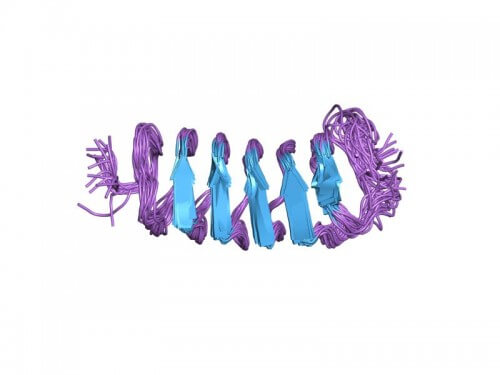A new study at the Hebrew University examined how antifreeze proteins work in nature

Many creatures - fish in the North Sea, beetles in the forests of Canada, plants in the Siberian steppes and more - are exposed to the cold that should have frozen them, but they do not freeze thanks to special proteins in their bodies that stick to the ice crystals and prevent their growth. A new study at Hebrew University and Ohio University found that these proteins can irreversibly stick to ice crystals even when the environment is low in proteins. The findings have implications for future uses in medicine, the frozen food industry, agriculture and even cloning organisms.
In a study conducted by Prof. Ado Breslavsky and his team at the Institute of Biochemistry, Food Sciences and Human Nutrition in the Robert H. Smith Faculty of Food Agriculture and the Environment at the Hebrew University and the Department of Physics at Ohio University, in collaboration with researchers from Canada and California, the relationship between antifreeze proteins and the ice crystals to them was examined They stick. The study showed that an ice crystal that was in a solution containing antifreeze proteins remained coated with these proteins even after the solution was replaced with a protein-free solution, so that the crystal remained its original size.
According to Prof. Breslavsky "so far, these proteins have not been used for human needs, except in the production of low-fat ice creams, where the addition of ice-adherent proteins preserves the texture despite the reduction in the amount of fats and prevents lumpiness as a result of the growth of ice crystals. Our research advances the understanding of the activity of antifreeze proteins, and expands and improves their use in cold preservation. An effective combination of antifreeze proteins in cold preservation can bring about a revolution in applications where control of freezing is required, such as preserving tissues and organs in the cold, protecting against cold damage in agriculture, preventing the accumulation of ice on airplane wings, and improving the quality of frozen and chilled food."
"Our research proves that the antifreeze protein binds the ice directly and strongly and does not leave it even if there is no other protein around," says Prof. Breslavsky, "There is no need for dissolved protein in the vicinity of the crystals in order for the growth prevention effect to continue."
Prof. Breslavsky and his team's research was carried out on antifreeze proteins from the flour beetle larva. These proteins are considered hyperactive since they can prevent ice growth at lower temperatures than the proteins found in fish and used in industry today. The researchers developed miniature devices in which they grew ice crystals one hundredth of a millimeter in size. The devices keep the crystals in their solid state even when the surrounding liquids change.
The article was published this month in the prestigious journal of the American Academy of Sciences PNAS.

One response
Can be used to freeze people on long flights in space or just people who want to live in the future...